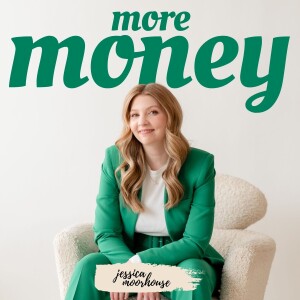
141 Deconstructing FIRE (Financial Independence Retire Early) - Bob Lai, Blogger at Tawcan
 2018-01-31
2018-01-31
Have you heard of the FIRE movement before? In this episode I chat with Bob Lai from Tawcan about what it means to be financially independent and how make an investment strategy to get there.
Long description:
For anyone who wanted a deep look into the FIRE movement, and to get the low down on how to become financially independent, this is an episode you are gonna love! I chat with Bob Lai, the blogger behind Tawcan, about his plans to reach financial independence while being a single-income family with his wife and two kids.
He even shares what his personal investment strategy looks like: a mixture of dividend paying stocks (a.k.a. blue-chip stocks), index ETFs, and a small percentage of growth stocks.
Now, if you’re just getting started with your investment journey, before getting into DIY investing like Bob, a good place to start is by investing in index mutual funds, like the portfolios that Tangerine offers. It’s actually what I started investing with, as they track the index and charge way lower MERs than the big banks.
Financial Independence vs. Financial Freedom
Most people use these two terms interchangeably, I’ve even been guilty of it. But talking to Bob, I learned that they actually mean to very different things.
Financial independence is when your passive income exceeds your expenses. Many people believe the magic number is to have 25 times your living expenses saved up through savings and investments. Or if you’re more conservative, 33 times your living expenses.
Financial freedom on the other hand is a relatively loose term, but generally speaking mean that you’ve accumulated so much wealth that you don’t even have to worry about or rely on your passive income.
Happiness vs. Joy
Another concept we talked about was the difference between happiness and joy, and balancing the two. You see, happiness is externally driven and has an expiry date. For instance, when you get a raise or buy something you’ve been saving up for. Both of those things would make you happy, for a time, and then it would dissipate.
Joy is internally driven, and is the feeling of being at peace. It’s also less fleeting than happiness, and usually comes about from fulfilling experiences and being around your loved ones.
A big part of the FIRE movement is about focusing on joy instead of happiness. Also, joy doesn’t cost as much as happiness (if we’re talking about happiness through buying goods), so the more you focus on joy, the more money you’ll be able to save to reach your goal of financial independence.
Stocks that Pay Dividends vs. Stocks that Don’t
Not all stocks are the same. Some pay dividends, some don’t. The companies that don’t pay dividends (ie. Facebook) are the ones that are still in a growth stage. Instead of paying dividends to their shareholders, they reinvest their profits to continue to grow the company.
Companies that do pay dividends are companies that are already so big (Proctor & Gamble, Johnson & Johnson), that they don’t need to reinvest all of the profits for further growth, so they share their profits with their shareholders (also making those shares more lucrative to potential stock buyers).
Bob’s Top Blog Posts You’ll Want to Read
FIRE. RIP. 2014-2018 Building My Dividend City How My Struggles with English Taught Me About Financial LiteracyLearn More About Bob Lai (Tawcan)
Follow Bob on Twitter Like Bob on Facebook Follow Bob on Instagram Follow Bob on PinterestFor full episode show notes, visit https://jessicamoorhouse.com/141
More Episodes
Create your
podcast in
minutes
- Full-featured podcast site
- Unlimited storage and bandwidth
- Comprehensive podcast stats
- Distribute to Apple Podcasts, Spotify, and more
- Make money with your podcast
It is Free
- Privacy Policy
- Cookie Policy
- Terms of Use
- Consent Preferences
- Copyright © 2015-2024 Podbean.com




